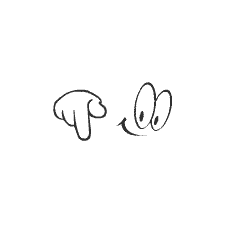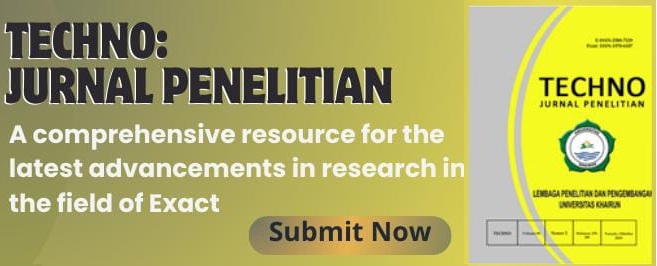Assessing the Level of Soil Development as a Strategy for Land Management a Case Study in West Halmahera Regency of Indonesia
Abstract
Signs of soil that has undergone advanced development include clearer horizons, higher fine fraction and lower coarse fraction, brighter soil color, higher levels of free Al and Fe. Soil aggregation is increasing, to a certain extent organic matter and nutrient levels are increasing as well as CaCO levels, and soluble salts. Soil development is characterized by the occurrence of horizon differentiation as a representative of the process of change in the earth's skin both physically, chemically and biologically by reactions in the soil profile there is an addition of organic and mineral materials in the form of solid, liquid or gaseous materials, the disappearance of materials above the soil, the transfer of materials from one part to another in the soil body, the transfer of the form of mineral compounds and organic matter in the soil body This research was carried out in the village of Bobaneigo Madihutu, South Jailolo District, West Halmahera Regency from June to July 2023. The method used in data collection is a free survey method, which is an observation made directly in the field by determining the research location based on land use maps, and administrative maps. The variables observed were C-Organic, N-Total, C/N Ratio, CEC, KB which are soil chemical properties. The results showed that the study of the level of soil development in several types of land use has not experienced weathering or advanced development due to the low content of nutrients.
Keywords
Full Text:
PDFReferences
Acosta, J. A., Martínez-Martínez, S., Faz, A., & Arocena, J. (2011). Accumulations of major and trace elements in particle size fractions of soils on eight different parent materials. Geoderma, 161(1-2), 30-42. https://doi.org/10.1016/j.geoderma.2010.12.001.
Adhikari, K., Lalitha, M., Dharumarajan, S., Kaliraj, S., Chakraborty, R., & Kumar, N. (2024). Introduction to soils: soil formation, composition, and its spatial distribution. In Remote Sensing of Soils (pp. 3-11). Elsevier. https://doi.org/10.1016/B978-0-443-18773-5.00015-6.
Adyanova, A., Buluktaev, A., Mukabenova, R., Mandzhieva, S., Rajput, V., Sayanov, V., ... & Sushkova, S. (2023). Characterization of arid soil quality: physical and chemical parameters. Eurasian Journal of Soil Science, 12(2), 151-158. https://doi.org/10.18393/ejss.1214692.
Aji, K., Maas, A., & Nurudin, M. (2020). Relationship between soil morphology and variability of upland degradation in Bogowonto Watershed, Central Java, Indonesia. Journal of Degraded and Mining Lands Management, 7(3), 2209. https://doi.org/10.15243/jdmlm.2020.073.2209
Alam, S., Sunarminto, B. H., & Siradz, S. A. (2012). Characteristics of soil parent materials complex ultramafic geological formations in Southeast Sulawesi. J Agroteknos, 2(2), 112-120. http://dx.doi.org/10.56189/ja.v2i2.2270.
Arifin, M., Devnita, R., Anda, M., Goenadi, D. H., & Nugraha, A. (2022). Characteristics of Andisols developed from andesitic and basaltic volcanic ash in different agro-climatic zones. Soil Systems, 6(4), 78. https://doi.org/10.3390/soilsystems6040078.
Doetterl, S., Berhe, A. A., Heckman, K., Lawrence, C., Schnecker, J., Vargas, R., ... & Wagai, R. (2025). A landscape-scale view of soil organic matter dynamics. Nature Reviews Earth & Environment, 1-15. https://doi.org/10.1038/s43017-024-00621-2.
Fauzia, A. (2024). Kajian literatur: Pertanian perkotaan sebagai penyedia jasa ekosistem dalam tujuan pembangunan berkelanjutan. Journal of Critical Ecology, 1(2), 60-76. https://doi.org/10.61511/jcreco.v1i2.1171.
Hartono, G., & Hadun, R. (2021, December). Kajian Karasteristik Tanah Berdasarkan Toposekuen Yang Berbeda Di Kelurahan Foramadiahi Kecamatan Pulau Ternate. In Prosiding Seminar Nasional Pertanian (Vol. 1, No. 1).
Hernández, R. C., & Camerin, F. (2024). The application of ecosystem assessments in land use planning: A case study for supporting decisions toward ecosystem protection. Futures, 161, 103399. https://doi.org/10.1016/j.futures.2024.103399.
Joyontono, P., & Sartohadi, J. (2016). Penilaian perkembangan tanah di lereng gunungapi Ijen berdasarkan pendekatan pedogeomorfologi. Jurnal Bumi Indonesia, 5(2), 228647.
Ladjinga, E., Hartono, G., & Arfa, R. A. (2020, November). Kajian tingkat perkembangan tanah pada batuan induk vulkanik dan batuan induk sedimen di Pulau Tidore. In Prosiding Seminar Nasional Agribisnis (Vol. 1, No. 1).
Lal, R., Bouma, J., Brevik, E., Dawson, L., Field, D. J., Glaser, B., ... & Zhang, J. (2021). Soils and sustainable development goals of the United Nations: An International Union of Soil Sciences perspective. Geoderma Regional, 25, e00398. https://doi.org/10.1016/j.geodrs.2021.e00398.
Luo, B., Li, J., Tang, J., Wei, C., & Zhong, S. (2024). Microtopography effects on pedogenesis in the mudstone-derived soils of the hilly mountainous regions. Scientific Reports, 14(1), 11998. https://doi.org/10.1038/s41598-024-62540-y.
Malihah, L. (2022). Tantangan dalam upaya mengatasi dampak perubahan iklim dan mendukung pembangunan ekonomi berkelanjutan: Sebuah tinjauan. Jurnal Kebijakan Pembangunan, 17(2), 219-232. https://doi.org/10.47441/jkp.v17i2.272.
McGarry, D. (2003). Tillage and soil compaction. Conservation agriculture: Environment, farmers experiences, innovations, socio-economy, policy, 307-316. https://doi.org/10.1007/978-94-017-1143-2_37.
Rachman, A., Sutono, I., & Suastika, I. W. (2017). Indikator kualitas tanah pada lahan bekas penambangan. Jurnal Sumberdaya Lahan, 11(1), 1-10. https://doi.org/10.2018/jsdl.v11i1.8185.
Sharma, P. (2024). Biochar application for sustainable soil erosion control: a review of current research and future perspectives. Frontiers in Environmental Science, 12, 1373287. https://doi.org/10.3389/fenvs.2024.1373287.
Uehara, G., (2005). Volcanic soils. In: Hillel, D. (Ed.), Encyclopedia of Soils in the Environment, vol. 4. Elsevier, London, pp. 225–232. https://doi.org/10.1016/B0-12-348530- 4/00031-X.
Ugolini, F. C., & Dahlgren, R. A. (2002). Soil development in volcanic ash. Global Environmental Research-English Edition, 6(2), 69-82.
USDA, National Nutrient Data Base For Standard. (2014). Basic Report 20649, Tapioca, Pearl, Dry. The National Agricultural Libray.
Wang, X., Dong, X., Zhang, Z., Zhang, J., Ma, G., & Yang, X. (2022). Compaction quality evaluation of subgrade based on soil characteristics assessment using machine learning. Transportation Geotechnics, 32, 100703. https://doi.org/10.1016/j.trgeo.2021.100703.
Widiatmaka, S. H. (2007). Evaluasi kesesuaian lahan dan perencanaan tata guna lahan. Yogyakarta: UGM Press.
Wu, W., Huo, L., Yang, G., Liu, X., & Li, H. (2025). Research into the Application of ResNet in Soil: A Review. Agriculture, 15(6), 1-29. https://doi.org/10.3390/agriculture15060661.
Zhang, J., & Zhang, J. (2020). Soil environmental deterioration and ecological rehabilitation. Study of ecological engineering of human settlements, 41-82. https://doi.org/10.1007/978-981-15-1373-2_2.
DOI: https://doi.org/10.33387/tjp.v13i2.7973
Refbacks
- There are currently no refbacks.
Copyright (c) 2024 Erwin Ladjinga

This work is licensed under a Creative Commons Attribution-NonCommercial 4.0 International License.
-------------------------------------------------------------------------------------------------------------------------------------------------------------------
-------------------------------------------------------------------------------------------------------------------------------------------------------------------
TECHNO: Jurnal Penelitian
Published by: LPPM Universitas Khairun
Addres : Jalan Yusuf Abdurrahman Kampus II Unkhair, Kelurahan Gambesi, 97722 Kecamatan Kota Ternate Selatan, Provinsi Maluku Utara, Email: techno@unkhair.ac.id | URL: http://ejournal.unkhair.ac.id/index.php/Techno
Techno Jurnal Penelitian is licensed under a Creative Commons Attribution-NonCommercial 4.0 International License.


























